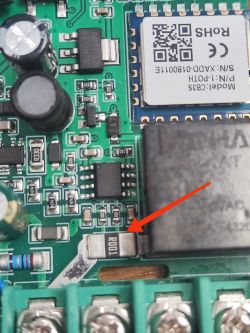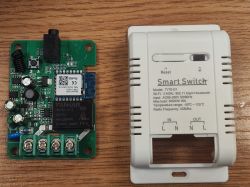Hi. I don't know. if this is the right section, if not please move the thread.
I have purchased a TYTE-D1 temperature switch controlled by Tuya. It has a temperature sensor and it allows you to control, for example, the heater in to heat water in the boiler according to a set schedule and turn it off once the water has heated up to the right temperature. Unfortunately, although it has a declared load of 3000W, there is a note in the description that the resistance load is only 1000W. I have connected a heater with just 1 kW to it, which, however, in practice (at the start of heating) gives a load of up to 1100 W. This is too little to damage the switch, but enough to trip the overload protection and disconnect the unit. After taking it apart, I can see that there is an electronic component on the path carrying the 'phase' to the relay that may be responsible for the overload protection. And here is the question for you. Is it possible to bridge this component to remove this protection? I can check it, but I don't want to tamper with the device because I can still return it free of charge. I warn you that I do not intend to use it with more load than this 1 kW heater.
 .
.
 .
.
I have purchased a TYTE-D1 temperature switch controlled by Tuya. It has a temperature sensor and it allows you to control, for example, the heater in to heat water in the boiler according to a set schedule and turn it off once the water has heated up to the right temperature. Unfortunately, although it has a declared load of 3000W, there is a note in the description that the resistance load is only 1000W. I have connected a heater with just 1 kW to it, which, however, in practice (at the start of heating) gives a load of up to 1100 W. This is too little to damage the switch, but enough to trip the overload protection and disconnect the unit. After taking it apart, I can see that there is an electronic component on the path carrying the 'phase' to the relay that may be responsible for the overload protection. And here is the question for you. Is it possible to bridge this component to remove this protection? I can check it, but I don't want to tamper with the device because I can still return it free of charge. I warn you that I do not intend to use it with more load than this 1 kW heater.
 .
.
 .
.






